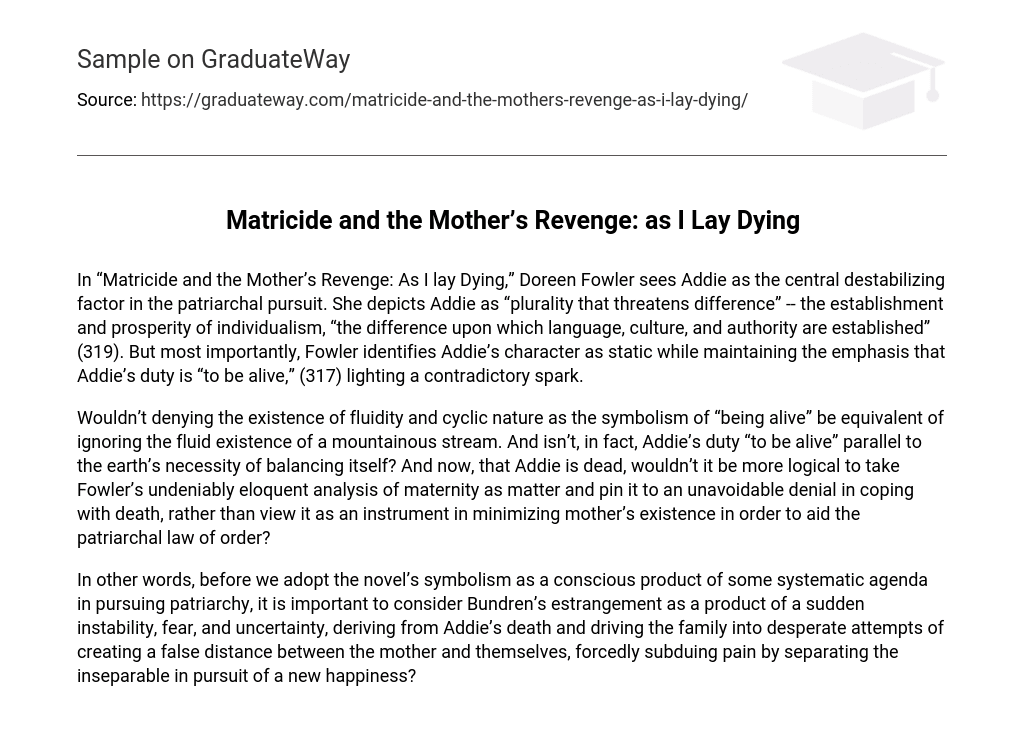In her analysis of “As I Lay Dying,” Doreen Fowler argues that Addie plays a significant role in disrupting the patriarchal norm. Fowler views Addie as a “plurality that poses a risk to difference,” representing the foundation of individualism, language, culture, and authority (319). However, what stands out is Fowler’s assertion that Addie’s character remains unchanged and her primary obligation is simply “to exist,” which presents an intriguing contradiction (317).
Denying the symbolism of “being alive” as fluidity and cyclic nature would be like ignoring the fluid existence of a mountainous stream. Addie’s duty to “be alive” is comparable to the earth’s need to balance itself. With Addie now deceased, it would make more sense to see Fowler’s analysis of maternity as an undeniable denial in coping with death rather than as a way to diminish the mother’s existence in order to support patriarchal order.
Before we attribute the symbolism in the novel to a deliberate effort to promote patriarchy, it is crucial to acknowledge that Bundren’s alienation is a consequence of sudden instability, fear, and uncertainty. These emotions arise from Addie’s death and compel the family to employ desperate measures to create a false separation between them and their mother. The purpose behind this is to suppress their pain by attempting to separate elements that are inherently connected, all in pursuit of a new form of happiness.





